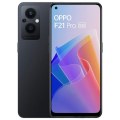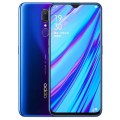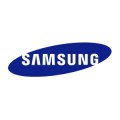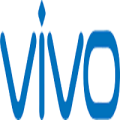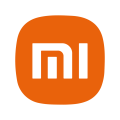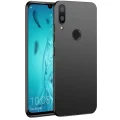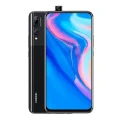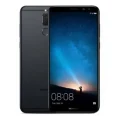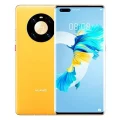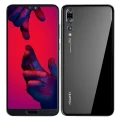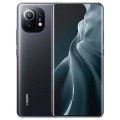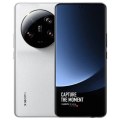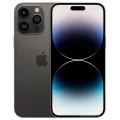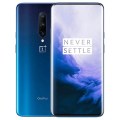Oppo F1s
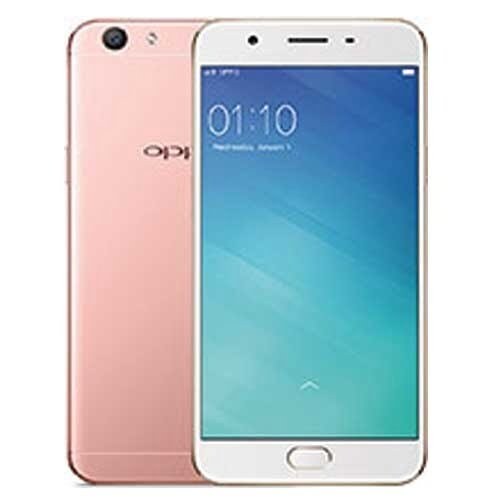


Oppo F1s Price in Bangladesh
The Oppo F1s is a mid-range smartphone priced around BDT 23,900 in Bangladesh. It offers a large display, a capable camera system, a long-lasting battery, and a powerful processor. It’s a popular choice among users who prioritize value for money and performance.
Specifications
General
| Model | Oppo F1s |
| Announced | 2016, August |
| Released | 2016, August |
| Status | Available |
Design
| Dimensions | 154.5 x 76 x 7.4 mm (6.08 x 2.99 x 0.29 in) |
| Weight | 160 g (5.64 oz) |
| Colors |
Gold, Rose Gold, Gray |
Network
| Technology | GSM / HSPA / LTE |
| 2G Network |
GSM 850 / 900 / 1800 / 1900 |
| 3G Network |
HSDPA 850 / 900 / 2100 |
| 4G Network |
LTE band 1(2100), 3(1800), 5(850), 7(2600), 8(900), 20(800), 28(700), 38(2600), 39(1900), 40(2300), 41(2500) - Global LTE band 1(2100), 3(1800), 5(850), 40(2300) - India |
| GPRS <strong>GPRS</strong> (General Packet Radio Service) is a packet oriented mobile data service on the 2G and 3G cellular communication system's global system for mobile communications (GSM), Generally, GPRS is used for the purpose of wireless data transfer, such as sharing pictures and videos or browsing the Internet via a mobile phone connection. | |
| EDGE <strong>EDGE</strong> (Enhanced Data GSM Environment) is a wireless network technology generally considered the next step in the 2G network offers data transfer rates up to four times faster than ordinary GSM networks, Generally, EDGE is used for the purpose of wireless data transfer, such as sharing pictures and videos or browsing the Internet via a mobile phone connection. | |
| Speed | HSPA 42.2/5.76 Mbps, LTE-A (2CA) Cat6 300/50 Mbps or LTE-A Cat4 150/50 Mbps |
Display
| Display Type <strong>Display Technology => </strong> A number of display technologies and types used in mobile phones => TFT (Thin Film Transistor), IPS (In-Place Switching), OLED (Organic Light Emitting Diode), AMOLED (Active-Matrix Organic Light-Emitting Diode), Super AMOLED (an even advanced version of AMOLED), Resistive Touchscreen (Resistive touchscreens contain two layer of conductive material with a very small gap between them which acts as a resistance), Capacitive Touchsceen (Capacitive touchscreen technology consists of a layer of glass coated with a transparent conductor) | IPS LCD capacitive touchscreen, 16M colors |
| Size | 5.5 inches, 83.4 cm2 (~71.0% screen-to-body ratio) |
| Resolution | 720 x 1280 pixels, 16:9 ratio (~267 ppi density) |
| Features |
Gorilla Glass 4 Color OS 3.0 |
Camera
Main camera
| Camera Setup | Single |
| Primary <strong>Camera</strong> is able to capture photographs and usually videos, The most important characteristics of a camera are the resolution (measured in megapixels), lens focus type (fixed or automatic), higher megapixel cameras are known to capture higher quality photos, but not always a good measurement of the photos quality. |
13 MP, f/2.2, 1/3&amp;quot;, PDAF |
| Features |
LED flash, panorama, HDR |
| Video | 1080p@30fps |
Selfie camera
| Camera Setup | Single |
| Primary <strong>Camera</strong> is able to capture photographs and usually videos, The most important characteristics of a camera are the resolution (measured in megapixels), lens focus type (fixed or automatic), higher megapixel cameras are known to capture higher quality photos, but not always a good measurement of the photos quality. |
16 MP, f/2.0, 1/3.1&amp;quot; |
Hardware
| Chipset <strong>Chipset</strong> is a group of integrated circuits designed to perform one or a more dedicated functions, often with real time computing constraints, Popular smartphones are equipped with more advanced embedded chipsets that can do many different tasks depending on their programming. | Mediatek MT6755 (28 nm) or MTK7650 (28 nm) |
| CPU <strong>CPU</strong> (Central Processing Unit) mostly known as processors, CPU processes instructions in order to carry out certain functions that make your device operate properly. Processors are often described as the brain of computers, smartphones and tablets, Smartphones and tablets rely on processors to carry out their every task, Processors are an incredibly important factor in selecting any type of computing device, including your smartphone. | Octa-core 1.5 GHz Cortex-A53 |
| GPU <strong>GPU</strong> (Graphics Processing Unit) is a single-chip processor designed to rapidly manipulate and alter memory to accelerate the creation of images in a frame buffer intended for output to a display, This includes things such as lighting effects, object transformations, and 3D motion. | Mali-T860MP2 |
| RAM (Memory) <strong>RAM</strong> (Random Access Memory) is a type of computer memory that can be accessed randomly, any byte of memory can be accessed without touching the preceding bytes that allows information to be stored and accessed quickly from random locations. RAM is the most common type of memory found in computer systems, smartphones, tablets and other electronic devices. | 3/4 GB |
| Internal Storage <strong>Internal Storage</strong> is a data storage space (flash memory) mostly used in smartphones, tablets and other electronic devices where operating system, apps, music, photos, videos, files and other user data Is stored. | 32/64 GB |
| Sensors <strong>Sensors</strong> are electronic components that detects and responds to some type of input from the physical environment. The specific input could be light, heat, motion, moisture, pressure and location, The output is generally a signal that is converted to use in computing systems, a location sensor, such as a GPS receiver is able to detect current location of your electronic device. |
Fingerprint (front-mounted), accelerometer, proximity, compass |
Connectivity
| Bluetooth <strong>Bluetooth</strong> is a wireless communications technology for exchanging data between mobile phones, headsets, computers and other network devices over short distances without wires, Bluetooth technology was primarily designed to support simple wireless networking of personal consumer devices. | 4.0, A2DP |
| Infrared <strong>Infrared</strong> connectivity is an old wireless technology used to connect two electronic devices. It uses a beam of infrared light to transmit information and so requires direct line of sight and operates only at close range. | |
| USB | microUSB 2.0, USB On-The-Go |
| GPS <strong>GPS</strong> The Global Positioning System is a satellite-based radio navigation system, GPS permits users to determine their position, velocity and the time 24 hours a day, in all weather, anywhere in the world, In order to locate your position, your device or GPS receiver must have a clear view of the sky. | Yes, with A-GPS |
| NFC <strong>NFC</strong> (Near field communication) is a set of standards for smartphones and similar devices to establish peer-to-peer radio communications with each other by touching them together or bringing them into proximity, usually no more than a few inches. |
Battery
| Battery Type <strong>Battery Type => </strong> Cell phones run on various kinds of batteries depending on the manufacturer, phone size or shape and features. There are basically four types of cell phone batteries => Lithium Polymer, Lithium Ion, Nickel Metal Hydride and Nickel Cadmium. | Non-Removable Li-Po |
| Capacity <strong>Battery Capacity</strong> is a measure (typically in Amp-hr) of the charge stored by the battery, and is determined by the mass of active material contained in the battery. The battery capacity represents the maximum amount of energy that can be extracted from the battery under certain conditions. | 3075 mAh battery |
Oppo F1s Review Journey Through Features and Performance
Dive into the world of the Oppo F1s, a smartphone that promises to deliver high-quality photography and seamless performance. Whether you’re a tech enthusiast, a smartphone user seeking your next device, or a photography lover looking for the perfect selfie companion, this review will offer valuable insights into what the Oppo F1s has to offer.
An Introduction to the Oppo F1s
Launched as part of Oppo’s initiative to blend affordability with advanced features, the Oppo F1s quickly captured the attention of smartphone users worldwide. Known as the “Selfie Expert,” it was designed to cater to the growing demand for high-quality front cameras in mobile devices. The F1s is part of Oppo’s vision to provide smartphones that meet the needs of tech-savvy users who crave not only functionality but also style.
This review aims to explore the key features that make the Oppo F1s stand out. For those new to Oppo, the brand has been steadily climbing the ranks in the smartphone industry, renowned for its innovative approach to design and technology. With the F1s, Oppo aimed to set a new benchmark in the mid-range smartphone market, offering features that typically belong to higher-end models.
In the following sections, we will explore every aspect of the Oppo F1s. From its design and build quality to its camera performance and user experience, we’ll leave no stone unturned. We’ll also compare it against similar offerings from competitors, giving you a comprehensive understanding of where the F1s stands in the crowded smartphone landscape.
Design and Build Quality
At first glance, the Oppo F1s exudes a sense of elegance that is hard to miss. Its sleek design and premium feel make it a standout choice for those who appreciate aesthetics in their gadgets. The phone boasts a metal unibody design, which not only looks sophisticated but also adds a layer of durability, ensuring the device can withstand the rigors of daily use.
The 5.5-inch display of the Oppo F1s is another highlight, offering ample screen real estate for browsing, gaming, and streaming. While the resolution is a standard 720p, the color reproduction and brightness levels are commendable, providing a pleasing visual experience. The screen is protected by Corning Gorilla Glass 4, adding an extra layer of security against scratches and accidental drops.
Ergonomically, the Oppo F1s is designed to fit comfortably in the hand. The placement of the buttons is intuitive, and the fingerprint sensor, embedded in the home button, is fast and responsive. This attention to detail in design ensures that the phone is not just easy on the eyes but also practical for everyday use.
Camera Performance
When it comes to photography, the Oppo F1s truly shines. Dubbed the “Selfie Expert,” it features a remarkable 16MP front camera, making it a top choice for selfie enthusiasts. The camera is equipped with a wide aperture, allowing more light to enter and resulting in brighter, clearer selfies even in low-light conditions. The built-in Beautify mode enhances photos by smoothing skin tones, which can be adjusted to suit individual preferences.
On the rear, the F1s sports a 13MP camera that delivers sharp and vibrant images. The camera app is user-friendly, offering a variety of modes such as Panorama, HDR, and Ultra HD, allowing users to capture stunning photographs with ease. The Phase Detection Autofocus (PDAF) ensures quick focus, ideal for capturing moments as they happen without delay.
Sample photos taken with the Oppo F1s demonstrate its capability to produce professional-level results. The front camera, especially, offers exceptional clarity and detail, living up to its “Selfie Expert” moniker. Whether you’re capturing a sunset or snapping a quick selfie, the F1s camera suite provides the tools needed for impressive photography.
User Experience
The Oppo F1s runs on ColorOS, Oppo’s custom interface based on Android, providing a smooth and intuitive user experience. The interface is clean and straightforward, with customizable features that enhance usability. The phone is powered by a MediaTek MT6750 processor coupled with 3GB of RAM, ensuring efficient multitasking and lag-free performance.
Battery life is another strong point for the F1s. With a 3075mAh battery capacity, the phone easily lasts a full day with regular use. This makes it a reliable companion for users who are always on the go, without the need to constantly worry about finding a charging station.
Overall, the F1s offers a user experience that is both engaging and reliable. Its performance is robust enough to handle day-to-day tasks seamlessly, while its battery life ensures you stay connected throughout the day. Whether you’re browsing social media, streaming videos, or playing games, the Oppo F1s delivers a consistently smooth experience.
Comparison with Competitors
In a market flooded with mid-range smartphones, the Oppo F1s holds its own against competitors. When compared to similar models like the Vivo V5 and Samsung Galaxy J7, the F1s stands out for its superior front camera capabilities. The 16MP selfie camera is unrivaled in this segment, making it a preferred choice for photography lovers.
In terms of design, the F1s shares similarities with higher-end models, offering a premium look and feel without the hefty price tag. While some competitors may offer higher resolutions, the overall display quality of the F1s remains satisfying for everyday use, with vibrant color reproduction and adequate brightness.
The Oppo F1s also provides a competitive edge with its robust battery performance and user-friendly interface. While other brands might offer slight advantages in certain technical specifications, the F1s presents a well-rounded package that balances features, performance, and price, making it an attractive option for tech enthusiasts and everyday users alike.
Conclusion
Summing up the Oppo F1s experience, it’s clear that this smartphone offers a compelling mix of design, performance, and camera capabilities. Its strengths are most evident in its exceptional front camera, stylish design, and user-friendly interface, all of which contribute to a satisfying user experience. While it may not have the highest resolution display on the market, its overall performance and value make it a solid choice in the mid-range smartphone category.
For tech enthusiasts, smartphone users, and photography lovers, the Oppo F1s presents an opportunity to enjoy a high-quality device without breaking the bank. Its combination of features and competitive pricing positions it as a worthy contender in its class. If you’re considering a new phone that excels in photography and offers solid performance, the Oppo F1s is certainly worth a closer look.
If you’ve had the chance to experience the Oppo F1s, we’d love to hear your thoughts. Share your experiences and join the conversation. Whether it’s your favorite feature or something you’d like to see improved, your feedback is valuable not only to us but also to fellow smartphone users considering their next purchase.
